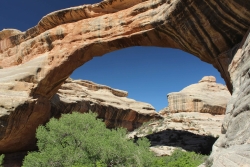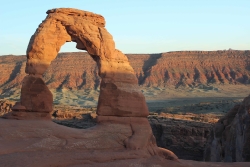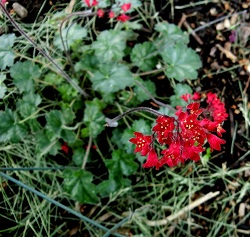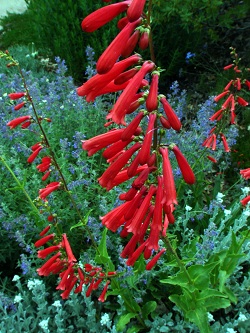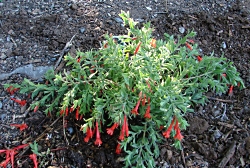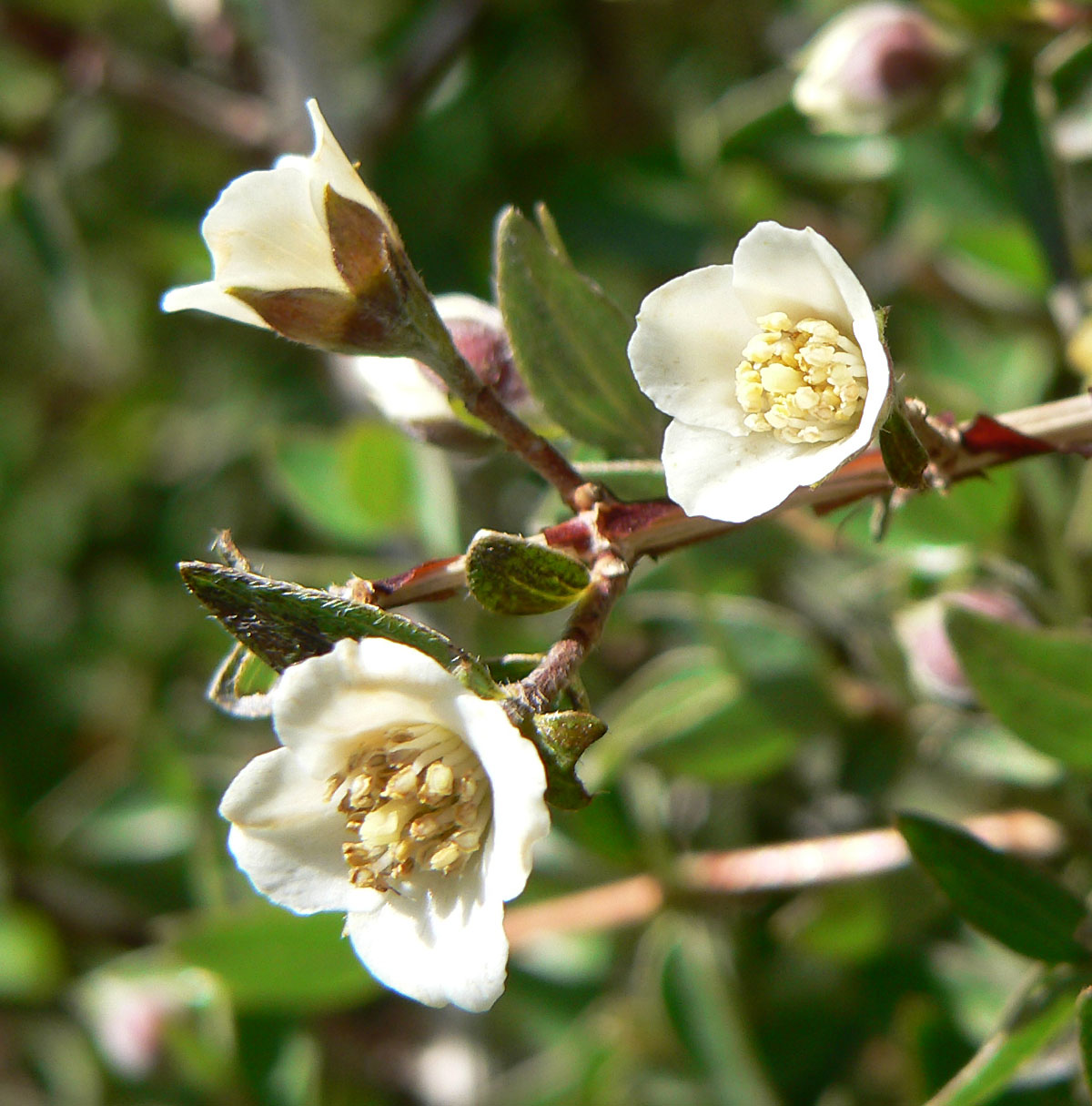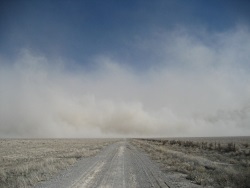
4 March 2009
US Geological Survey photo by Mark Miller
Hi, I’m Holly Strand of the Quinney College of Natural Resources at Utah State University.
American paleontologist Roy Chapman Andrews was a frequent visitor to the Gobi Desert. This is how he described being caught in a Gobi desert dust storm: “Seemingly a raging devil stood beside my head with buckets of sand, ready to dash them into my face…” “…after each raging attack it would draw off for a few moments’ rest. Then suddenly the storm devil was on us again, clawing, striking, ripping, seeming to roar in fury that any of the tents still stood.”
Andrews didn’t have to go so far to feel the rage of a dust storm. He could have come to western Utah. While we don’t have the monstrous storms of the Sahara and the Gobi/Manchurian deserts, the eastern Great Basin–which is essentially western Utah–sits secure on any global list of dust storm hotspots.
Let’s consider why this is so…
First and foremost, western Utah has the dust. In scientific terms, dust is any particle—organic or inorganic—that is less than .63 microns or smaller in diameter. .63 microns is about half the width of a single human hair. In geological terms think silt or clay particles. A grain of sand is much larger. If you are the size of a dust particle, then a relatively small puff of wind will release you into the air. And you’ll stay there until it’s completely calm or rain forces you down.
A great place to find geologic dust is in desert playas. For runoff sediments collect in these dry lake depressions. Western Utah has several of these desert dust bins. And satellite data have confirmed that playas such as Sevier Dry Lake, Tule Dry Lake, and Great Salt Lake Desert are major sources of dust plumes. The alluvial fans of the Great Basin mountains provide an additional source of dust.
To get this dust airborne you need wind which is also plentiful in western Utah. This region typically experiences strong south and southerwesterly winds called “hatu winds.” That’s Utah spelled backwards. The name was coined by colorful Utah meteorologist Mark Eubank. These hatu winds blow south to north or to the northwest. They pick up speed and dust as they race along the north-south trending Great Basin ridges. They can reach speeds of over 90 miles per hour.
Utah’s hatu winds peak in the spring months with a secondary peak in August-September. In spring these windy freight trains full of dust can hit the populated Wasatch Front wreaking havoc with air quality and human health.
Sometimes raindrops capture dust in the airstream and splat them onto our windshields and windows. These mud rains are most common in spring when the hatus are at their peak. And this is why saavy Utahns never bother washing their home windows until June.
While dust storms can be considered natural events, the fact that they are increasing in number and severity is definitely unnatural. The increase is caused by human-related activities that remove vegetation or break the biological soil crusts that help stabilize dust and soil. Overgrazing, water withdrawals, military operations, farming on marginal lands, off-road vehicle riding, fires, even restoration activities all release dust to be carried off by the next significant wind.
Thanks to Atmospheric Scientist Maura Hahnenberger for her help with this Wild About Utah story.
For Wild About Utah, and the Quinney College of Natural Resources, I’m Holly Strand.
Credits:
Images: Courtesy USGS.gov and NRCS.gov
Theme: Courtesy & Copyright Don Anderson as performed by Leaping Lulu
Sound: Wind sound effect from Sound Bible.com Recorded by Mark DiAngelo https://soundbible.com/1810-Wind.html
Text: Holly Strand
Sources & Additional Reading
Hahnenberger, M. and K. Nicoll. Geomorphic and land use characteristics of dust sources in the eastern Great Basin of Utah, U.S.A. Accepted Geomorphology. https://georesearch.ir/article-1-381-en.html
Hahnenberger, M. and K. Nicoll, 2012. Meteorological characteristics of dust storm events in the eastern Great Basin of Utah, U.S.A. Atmospheric Environment, 60, 601-612. https://doi.org/10.1016/j.atmosenv.2012.06.029, https://www.sciencedirect.com/science/article/abs/pii/S1352231012005808?via%3Dihub
https://sci-hub.se/https://doi.org/10.1016/j.atmosenv.2012.06.029
Jason P Field, Jayne Belnap, David D Breshears, Jason C Neff, Gregory S Okin, Jeffrey J Whicker, Thomas H Painter, Sujith Ravi, Marith C Reheis, and Richard L Reynolds The ecology of dust Front Ecol Environ 2010; 8(8): 423–430, doi:10.1890/090050 (published online 12 Oct 2009)https://www.esajournals.org/doi/pdf/10.1890/090050
https://sci-hub.se/https://www.esajournals.org/doi/pdf/10.1890/090050
Neff, J. C., A. P. Ballantyne, G. L. Farmer, N. M. Mahowald, J. L. Conroy, C. C. Landry, J. T. Overpeck, T. H. Painter, C. R. Lawrence, and R. L. Reynolds, 2008: Increasing eolian dust deposition in the western United States linked to human activity. Nature, 1, 189-195
https://www.nature.com/articles/ngeo133
https://sci-hub.se/https://doi.org/10.1038/ngeo133
Warner, Thomas T. 2004. Desert Meteorology. NY: Cambridge University Press
https://www.cambridge.org/core/books/desert-meteorology/830636E147078337D24957845F6A6855
https://doi.org/10.1256/wea.201.04
Washington, R., M. Todd, N. J. Middleton and A. S. Goudie, 2003. Dust-storm source areas determined by the Total Ozone Mapping Spectrometer and Surface Observations, Annals of the Association of American Geographers, 93(2), 297-313.
https://onlinelibrary.wiley.com/doi/abs/10.1111/1467-8306.9302003
https://sci-hub.se/https://doi.org/10.1111/1467-8306.9302003
Miller, M. E., et al. (2012). “Post-fire land treatments and wind erosion – Lessons from the Milford Flat Fire, UT, USA.” Aeolian Research 7: 29-44.
https://www.sciencedirect.com/science/article/abs/pii/S1875963712000171
https://sci-hub.se/https://doi.org/10.1016/j.aeolia.2012.04.001
Steenburgh, W. J., et al. (2012). “Episodic Dust Events of Utah’s Wasatch Front and Adjoining Region.” Journal of Applied Meteorology and Climatology 51(9): 1654-1669.
https://journals.ametsoc.org/view/journals/apme/51/9/jamc-d-12-07.1.xml

